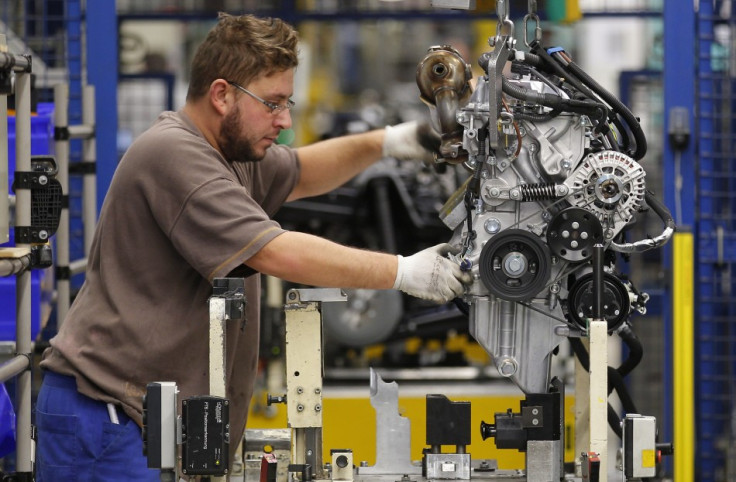Eurozone Data Points to Deeper Recession as German Manufacturing Slips

Activity in the Eurozone rebounded to a nine-month high in December, despite a troubling dip in manufacturing in the region's most important economy, but the strength of the growth is unlikely to prevent the region from slipping further into recession.
The Markit composite Purchasing Manager's Index, a comprehensive survey of more than 5,000 businesses around the single currency area, hit a nine-month high of 47.3, the data provider reported Friday. The figure was slightly above analysts' forecasts but still firmly below 50, the threshold which generally indicates economic expansion.
Manufacturing activity around the region was measured at a modestly higher 46.3 - just one tenth of a point better than the previous month - while services improved to 47.8, a five-month high, from 46.7 in November.
"The official GDP data are lagging behind the PMIs so we strongly suspect that the official data will show an increasing downturn of the euro zone recession in the final quarter," said Markit's chief economist Chris Williamson. "The data is consistent with GDP falling about 0.5 percent."
The European Central Bank last week slashed its growth estimate for next year, hinting that the best-case scenario would see only a modest 0.3 percent expansion while the downside suggested a deepening recession of 0.9 percent. Eurostat, the European Union's statistics office, said employment fell by 0.2 percent in the three months ending in September for the Eurozone while consumer prices fell, also by 0.2 percent, in the month of October.
Separate reports released prior to the Eurozone reading showed manufacturing activity in Germany - the bulk of the strength of Europe's largest economy - slumped to 46.3 from a November reading of 46.8. The disappointing figure, however, may have been offset by the first expansion of its services sector (to a robust 52.1 from 49.7 in November). Whether this will mean Germany will manage to avoid recession by recording flat or modest growth in the final three months of this year remains to be seen.
"Whereas before we were quite concerned we would see contraction in the fourth quarter, the risks are greatly reduced now," said Markit economist Chris Williamson. "You may still see a very small 0.1 percent contraction in the fourth quarter, but it will likely be a stagnation based on these numbers."
"If this continues, you will see gross domestic product rise at a reasonable although not spectacular rate in the first quarter, making Germany a driver for growth in the rest of the region."
Opinions of the strength of the Germany economy are divided, with the Bundesbank last week lowering its growth 2013 growth forecast one day after the ECB did the same for the wider Eurozone. Germany's central bank now sees its domestic economy growing at 0.4 percent next year, down from a June forecast of 1.6 percent.
"Given the difficult economic situation in some euro-area countries and widespread uncertainty, economic growth will be lower than previously assumed," the Bundesbank said. "The Bundesbank does not see a protracted slowdown but instead anticipates a return to growth path soon." However, the bank also hinted at a near-term recession, warning that "there are even indications that economic activity may fall in the final quarter of 2012 and the first quarter of 2013."
Earlier this week, the ZEW Centre for European Economic Research in Mahhheim said its key index of investor and analyst expectations for the economy rose to 6.9 points to a seven month high in December, suggesting that "financial market experts expect the economic activity to stabilize until early summer 2013," according to its president Wolfgan Franz.
© Copyright IBTimes 2025. All rights reserved.





















